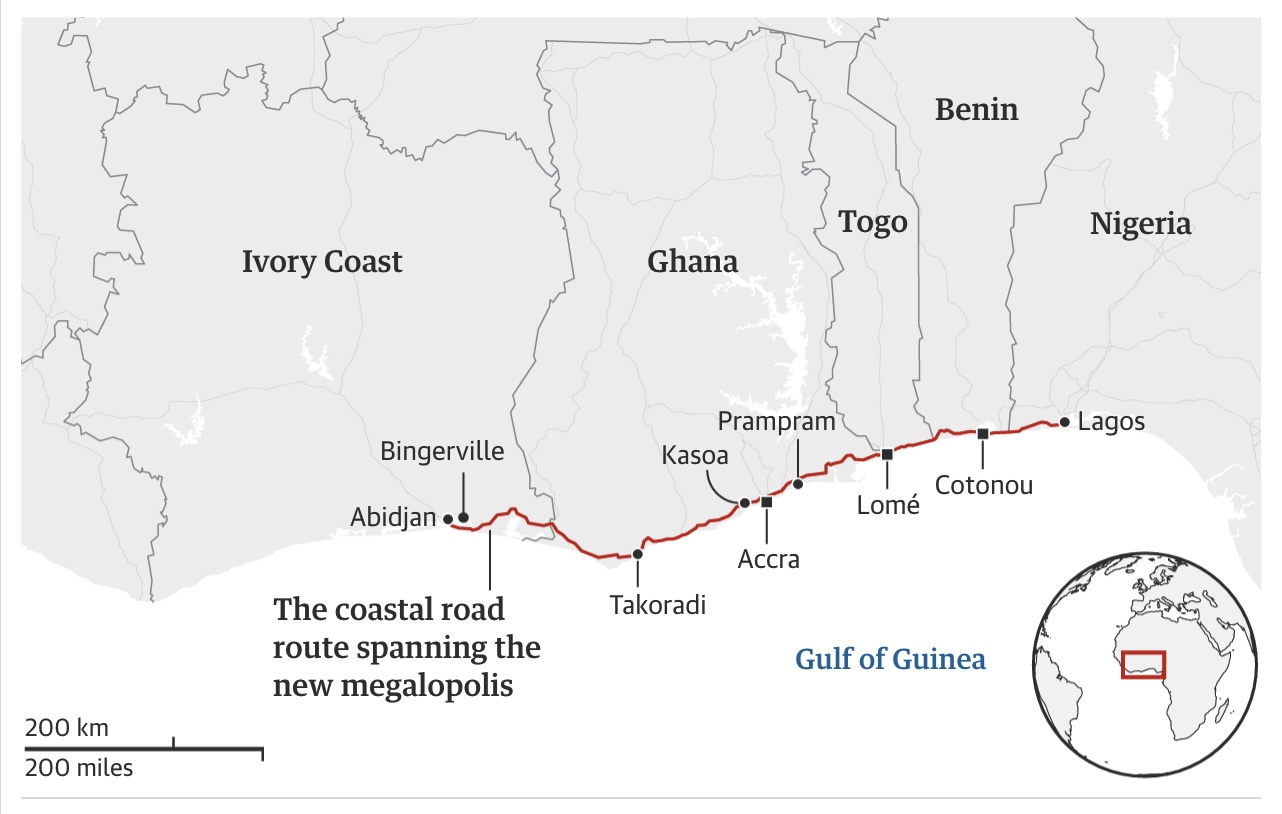Ha!
From Bloomberg via Mining.com, February 24:
The value of Indonesia’s nickel exports surged tenfold in five years
after it forced buyers to set up refineries in the country. Now
Southeast Asia’s biggest economy plans to use that blueprint to catapult
the nation into the ranks of higher-income economies by processing
everything from copper to fish.
The goal is to double per-capita GDP to $10,000 by 2045, which would
bring Indonesia close to the World Bank’s high-income threshold. At the
same time, the shift would create new centers of growth outside Java,
its richest and most populated island.
“We’re using nickel as the prototype,” said Investment Minister
Bahlil Lahadalia. “It’s silly. We have the raw materials, but we sell it
to be refined overseas then we import it back. Where did we leave our
brain?”
President Joko Widodo points to the economic models of Taiwan and
South Korea, two of only handful of nations that managed to escape the
so-called middle-income trap by building manufacturing and raising
productivity. For decades, Indonesia has relied on exports of raw
commodities — an economic strategy prone to the so-called resources
curse, where mineral rich nations suck in investment in mining during
boom times, but suffer when commodities prices tumble.
The new roadmap to more onshore processing will begin with oil and
gas this year, then fisheries. Down the line, Indonesia will only export
refined palm oil, coconut products, timber, seaweed and even salt. The
government estimates the drive could pull in $545 billion of investment —
about half the country’s current nominal GDP.
“We used to sell the Indonesia story by the numbers: 280 million
people, thousands of islands, and so on. That’s promoting history, not
investment,” Lahadalia said. “Now we tell them: ‘What industry do you
want? Here’s what you can make and here’s where you can do it.’”....
....MUCH MORE
Ha, I say!
If interested see January's "Rio Tinto–backed firm InoBat plans to build battery gigafactory in Serbia":....Although
the story of why the deposit has not been mined is complicated (see
links in intro if interested), one thing is certain, these resource-rich
little countries want to be left with something much higher up the value chain than just a hole in the ground.
And February 8's "Indonesia's President Jokowi ‘confident’ Tesla Will Invest (TSLA)":
We've been pitching Indonesia for a while. The introduction to June 2021's "Indonesia and Coal":
An indigenous battery industry would capture some of the value-added from the country's world-class nickel resource. Elon Musk went to New Caledonia to secure a supply. He should have gone to Indonesia. And maybe built a gigafactory.
As we saw back in April regarding Sulawesi:
Tesla Inc.’s Elon Musk has said nickel is the metal that concerns him
most as he looks to scale up battery-cell production, and last year he
promised a “giant contract” for miners to encourage production. Without
new sources of supply, the robust EV industry could face a critical
shortage within a few years.....
Capture some of the downstream profits and you have a bit more wiggle room to deal with the coal.
Now we have two stories via Mining.com. First up, the headliner from Reuters, February 1:
Indonesian President Joko Widodo is
confident Tesla Inc will finalize a deal to invest in a production
facility in his country, having offered the US car maker incentives
ranging from tax breaks to a concession to mine nickel.
Southeast Asia’s largest economy has been wooing Tesla to invest in
battery and car manufacturing since 2020, seeking to leverage its rich
reserves of nickel ore, which can be processed for use in EV batteries.
The president, widely known as Jokowi, has held talks with Tesla
Chief Executive Elon Musk twice, meeting him in person at his SpaceX
facility in Texas last year and a telephone call, to try to secure a
deal.
“I said to him that if you invest in Indonesia, I will give the
concession of nickel,” Jokowi said, referring to Indonesia’s offer of a
mining concession.
Other incentives include tax breaks and a subsidy scheme on EV
purchases to build a market for Tesla in the world’s fourth most
populous country, he said, adding that his ministers were finalizing the
subsidies.
The president said he was “confident” Indonesia had the edge over
other countries Tesla might be considering for investment because it has
the largest nickel reserves and a big domestic market.
Jokowi said it was up to Tesla to take up the offer to mine nickel,
underlining that Indonesia is open to investment in the EV battery and
electric car supply chain.
“If they want to start from EV battery, it’s OK,” he added....
....MUCH MORE
And February 6:
Like Musk, nickel-rich Indonesia has high electric vehicle ambitions
Armed with the world’s largest reserves of nickel and a ban on the
export of nickel ore, Indonesia is making itself indispensable for the
electric vehicle industry, which uses the metal extensively.
In just three years, Indonesia has signed more than a dozen deals
worth more than $15 billion for battery and electric vehicle production
in the country with manufacturers including Hyundai Motor, LG Group and
Foxconn.
Next up is the mammoth Tesla Inc, the world’s most valuable automaker. President Joko Widodo has pulled out all the stops to convince CEO Elon Musk to manufacture electric vehicles or batteries in the sprawling Southeast Asian archipelago.
“I’m very confident this industry will grow quickly, will grow very
fast,” the president, popularly known as Jokowi, said in an interview
last week.
Indonesia has a total of 21 million tonnes in proven reserves with
nickel content, according to the US Geological Survey. That is nearly a
quarter of the world’s reserves.
The country mined 1.4 million tonnes of nickel in January-November
last year, according to the International Nickel Study Group. That’s far
ahead of the second-biggest producer, the Philippines, which mined
290,000 tonnes in the same period, and more than double Indonesia’s
output of 606,000 tonnes in 2018.
Jokowi banned exports of nickel ore in 2020, but allowed export of
higher value nickel products – forcing companies to process and
manufacture onshore.
Indonesia’s exports of processed nickel then swelled to more than $30 billion in 2022 from about $1 billion in 2015.
Indonesia is expected to account for half of the global production
increase in nickel between 2021 and 2025, according to the International
Energy Agency, as demand for electric vehicles surges. Each vehicle
uses up to 40 kg of nickel....
....MUCH MORE
Previously on Indonesia:
And very related:





